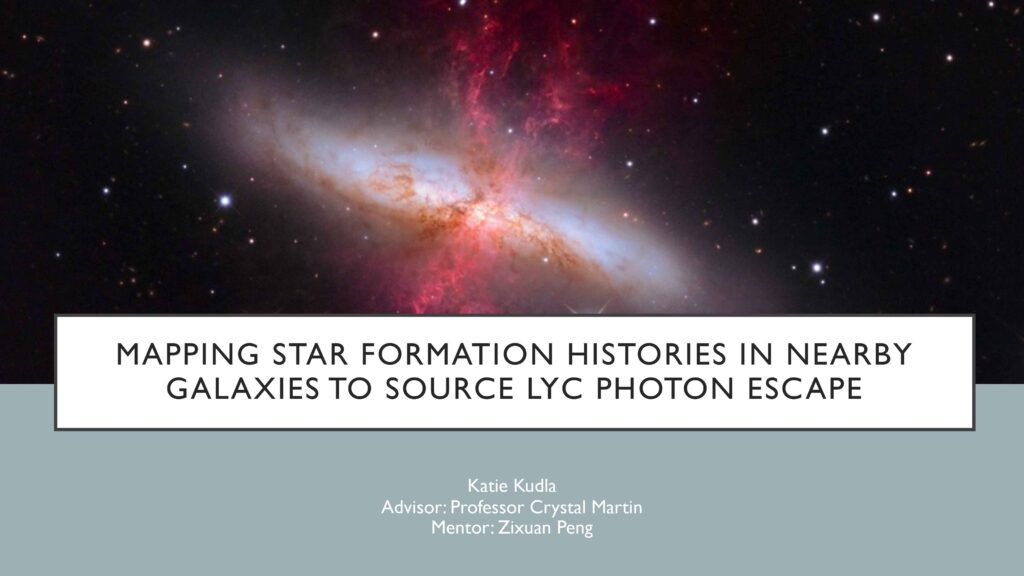Katie Kudla ’24

Mapping Star Formation Histories in Nearby Galaxies to Source Lyman Continuum Photon Escape
Katie Kudla ’24, Physics major
Faculty Mentor: Dr. Joseph Ribaudo, Engineering and Physics
Oral Presentation: Wednesday, April 24, 10:12 a.m.
The Epoch of The Epoch of Reionization (EoR), or the final transition phase of our universe, occurred between 150 million and 1 billion years after the Big Bang. This was when Lyman continuum photons escaped galaxies and ionized the neutral hydrogen that surrounded them. There are many mysteries, from the EoR, we must explore to more fully understand how galaxies formed and evolved through time. We map the star formation histories in 6 nearby Extreme-Emission-Line-Galaxies (EELGs), considered local analogs of those from the Epoch of Reionization (EoR). We use integral field spectroscopy to extract and analyze the emission and absorption spectra (Balmer lines) for the different stellar complexes identified in each galaxy. Using stellar population synthesis model, BEAGLE, to generate mock galaxy spectra, we compare the Balmer lines of our sample stellar complexes to those of the simulated stellar complexes. We use this comparison to approximate stellar population ages and their distributions throughout each galaxy. In addition to providing a preliminary theory for Lyman continuum photon escape, a phenomenon crucial to the EoR, this research motivates future research on these 6 local analog galaxies. We can investigate why it is that these 6 “modern-day” galaxies so closely resemble those from the EoR.






